Earlier this month, the Cassini spacecraft plunged into the gas giant Saturn, in a grandiose conclusion to one of NASA's most fruitful and successful missions. The spacecraft has many fascinating discoveries to its credit, but also new mysteries that the researchers had never imagined when the spacecraft set out on its journey 20 years ago. Several follow-up missions to Cassini have recently been proposed, including a rover that will explore the icy surface of the moon Titan or a spacecraft that will "taste" the geysers that emanate from the subterranean ocean of the moon Enceladus.
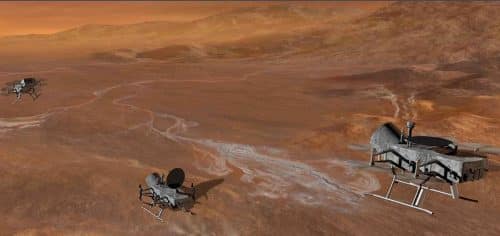
Is the global water ocean who is hiding Beneath the icy mantle of the moon Enceladus is alien life infesting? Can exotic life exist inThe liquid methane lakes of the moon Titan, at a temperature of -179 degrees Celsius? What is the composition of Saturn's atmosphere, and what can it teach us about how the gas giant was formed and developed? How and when were his beautiful rings created and developed?
These are just some of the questions that Cassini left unanswered her crash into Saturn's atmosphere on September 15. The moment of losing contact with the spacecraft in the control center was very sad and exciting for researchers, engineers and fans of the mission - but this is not the end of the study of Saturn's mysteries.
In recent years, a large number of proposals have been made to explore the new mysteries from Saturn, some more practical and some less so. For example, there were those who offered send a submarine Queue Titan's liquid methane lakes, and some pondered over Drilling through the ice sheet of Enceladus and insert a submarine into its mysterious subterranean ocean. These are proposals that might be possible to develop if there was no budget limitation, but this is not the case.
Are there more practical proposals that NASA might fund? A number of such proposals were submitted for the next task in the program "The new frontiers” of NASA, in which the New Horizons spacecraft were previously launched to Pluto, Juno to Jupiter, and Osiris-Rex to a near-Earth asteroid. This program allows planetary research missions with a "medium" cost of a billion dollars, while the cost of the "cheap" missions of Discovery program ranging between 600 and 700 million dollars, and the "Flagship” (like Cassini) cost between 2 and 3 billion dollars.
Part of the proposals submitted requests to land a lander on the hot soil of Venus; Another proposal wants to send a lander to return a sample from the moon to Earth; And several proposals include a mission to return a sample to Earth from the surface of a comet's nucleus, with one of them even seeking to return to the same comet that the Rosetta spacecraft studied, Comet 67P/Churyumov-Grasimenko.
Among these fascinating proposals there are also quite a few proposals for the study of Saturn itself, or the study of its moons Enceladus and Titan.
A drone that will fly on top of Titan
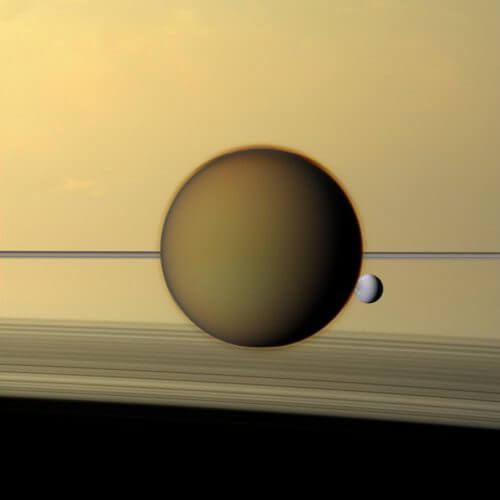
The boldest and most exciting mission proposed for the New Frontiers program is without a doubt “Dragonfly” (Shafirit in Hebrew). The proposal seeks to land on the moon Titan a dual quadcopter type drone (having four upper rotors and four lower rotors - what Which he gave The task got its name, since dragonflies have two pairs of wings.
Titan is the only moon in the solar system with a dense and significant atmosphere. In fact, the atmospheric pressure on its surface is slightly greater than that on Earth. Together with its low gravity (14% of Earth's) - Titan provides ideal conditions for aviation.
At Titan's enormous distance from the Sun, along with the atmosphere thatHiding the drop of light that reaches it, the drone will not be able to use solar energy to operate. Instead Dragon Play will use theThermoelectric radioisotope generator, which produces electricity based on the heat emitted from radioactive material. A major advantage of such a generator is its ability to operate for many years. Other spacecraft that used such a generator, for example, are Cassini which operated for 20 years (and could have operated for many more years had it not been sent to a deliberate death inside Saturn) and the Voyager spacecraft, which are still active after 40 years.
Watch a short lecture about the mission:
Thanks to its flight ability, Dragon-Fly will be able to move over problematic obstacles and cover much greater distances than robotic all-terrain vehicles sent to Mars or the Moon. He will be able to explore, in one mission, completely different geological areas on Titan - dunes of "sand" hydrocarbon At the equator (originating from the abundant methane in the atmosphere) to the liquid methane lakes at the poles.
Titan's enormous distance from Earth will require the rover to be able to operate completely autonomously. This is probably the reason that, although similar proposals have already been made in the past for the study of Titan, only now has such a task become practical - thanks to the significant technological progress in drone and UAV technology in recent years.
To study Titan's atmosphere, surface and internal structure, Dragonfly will make several types of measurements: a mass spectrometer will use samples from the surface and atmosphere to determine their chemical composition; A gamma ray spectrometer will measure the general chemical composition of the surface; A system of atmospheric sensors will measure the atmospheric pressure, temperature and winds; Seismographic measurements will study Titan's internal structure; And of course - an array of cameras will characterize the exotic geology of Titan.
A spaceship that will remotely explore Titan's subterranean ocean
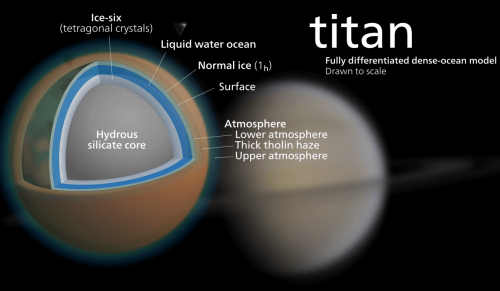
You may have already heard of the oceans that hide under the outer ice layers of moons such as Enceladus of Saturn or Europa of Jupiter - but these are not the only moons in the solar system that contain an internal layer of liquid water, and Titan is also among these moons.
The main reason why Titan is less well-known for this feature is probably because, unlike Enceladus and Europa, researchers are not sure whether its deep water ocean interacts with a deeper layer of rock or with the surface. Such an interaction is required to provide the other chemical components, besides water, that are essential for life.
The study of this deep ocean, and other questions about the nature of Titan's atmosphere and surface, are the ones at the center of another proposal for the study of the mysterious moon.
The proposal seeks to send a named probe to Titan OCEANUS, named after the sea god ocean from Greek mythology. The spacecraft will first enter an orbit around Saturn, and later a two-year orbit around Titan itself.
The spacecraft will have three dedicated devices to carry out its mission - an infrared camera, a light frequency capable of penetrating the orange haze layer that surrounds Titan; altimetric radar for topographic mapping; A mass spectrometer, which will determine the chemical composition of the atmosphere, when the spacecraft will pass through its upper layers and sample it directly. Another measurement will be made through the spacecraft's radio transmission with the control center on Earth, in order to map the gravitational field and the internal structure of the moon.
Unlike Cassini or the Dragonfly spacecraft, the proposed spacecraft (as well as the next spacecraft described in this article) will use solar panels to provide its electricity consumption. Until recent years, this method was considered impossible, since Saturn is about 10 times farther from the Sun than Earth. At such a huge distance, a photovoltaic cell would be able to produce about one hundredth of the electricity it could produce on Earth. Improvements in solar technology in recent years have made this option more practical.
A hyphen that will sample Enceladus' geyser eruptions from space
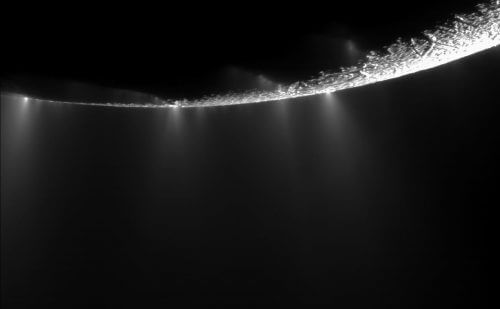
Two other proposals seek to explore Saturn's moon Enceladus. This small moon, whose diameter is no more than about 500 km, became famous for its huge geysers, erupting from the south pole. These geysers spray into outer space ice particles originating from its internal ocean, which is hidden several kilometers below the outer ice layer of the moon.
Enceladus' geysers are a gift for researchers who want to study the contents of the small moon's internal ocean, and look for, for example, organic compounds that would indicate the existence of life. They make it possible to save a rather complex task that is impossible with today's technology, of drilling several kilometers through the ice layer to reach the ocean.
Cassini itself has already done this in fact, but since its designers had no idea of the existence of geysers when they developed it in the 80s and 90s, the spacecraft's mass spectrometer was not developed enough to detect the specific compounds, and could only measure the elements that make them up.
Details were published only about one proposal. The proposal, the machine Enceladus Life Finder (or ELF for short), will be equipped with three different mass spectrometers, as well as a camera for surface documentation. The spacecraft will not enter an orbit around Enceladus, but, like Cassini, will remain in orbit around Saturn and make many flybys near the small moon.
A probe that will dive into Saturn's atmosphere
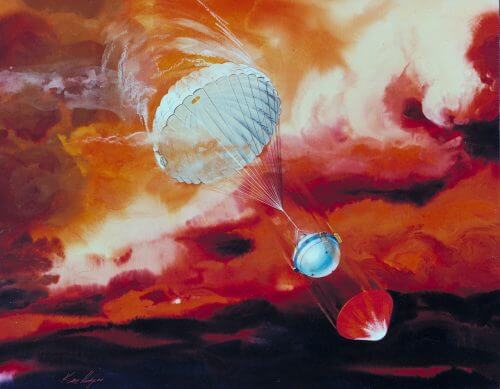
Apparently it wasn't enough for Saturn researchers to send Cassini to its death by plunging into Saturn's atmosphere, because one of the proposals asks to do it again.
According to the proposal, the machine Saturn PRobe Interior and Atmosphere Explorer (abbreviated - SPRITE), a probe will be sent to Saturn with the aim of falling into the Saturnian atmosphere for an hour and a half, until it reaches too high a pressure and destroys life.
It is worth noting that Cassini did not really explore Saturn's atmosphere in depth during its death dive, as it did not have time to penetrate into the denser atmosphere, and its instruments were not designed for it.
In terms of its mission, the probe is very reminiscent of the probe that was attached to the Galileo spacecraft that studied Jupiter and sent it into the atmosphere of the king of the planets in 1995: the probe will penetrate the atmosphere using a heat shield that will allow it to survive the penetration into the atmosphere, and then open its parachute and begin a slow descent down and down, In a world without solid ground.
The proposed probe will be sent to Saturn on a mother spacecraft that will remotely photograph the site to which the probe will descend and send the information it collects to Earth.
It will include several spectrometers and additional sensors, which will allow it to determine the chemical composition of the atmosphere and map the different types of cloud layers. Another goal will be to determine the isotope ratios of various elements - data that will allow researchers to determine with greater precision how Saturn was formed and when it, along with the other gas giants, began to wander through the solar system when it was young. phenomenonMigration of the planets", the researchers estimate, had a substantial effect on the formation of the terrestrial planets, including the Earth.
Which task will you choose?
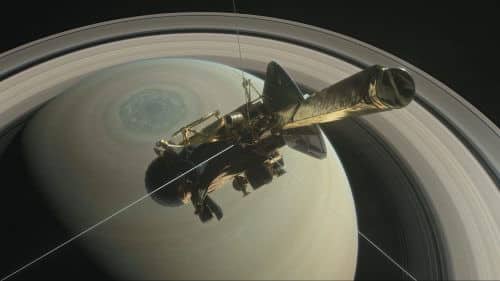
All the proposals listed above try to answer central questions and mysteries that have remained unanswered for many years, but only one of them can be selected in the competition for the next mission of the "New Frontiers" program.
NASA is expected to announce later this year three finalists among the 12 submitted for the competition, with the confirmed winner not being announced until 2019, with a planned launch target of 2025.
It is very possible that NASA will eventually choose one of the additional proposals submitted to the competition, which are not at all related to Saturn and its moons. For many years, NASA has neglected the study of Venus, and this time it may prefer to choose one of the two proposals for the study of the planet. Another possibility is that President Donald Trump's administration would prefer to promote lunar exploration as part of its emerging space policy, which would give priority to the proposal to send a probe to return a sample from the moon.
These considerations will not be the only ones that will influence NASA's decision. The agency will also have to determine the degree of risk of each proposal, both in terms of the success of the mission and in terms of delays in the schedule and compliance with the budget requirements. That may be why there is a downside to a bold proposal like the Dragonfly spacecraft for Titan, which seeks to use technology that has never been tried before in space exploration.
Even if in the end no mission is chosen for Saturn or one of its moons - do not say despair. The James Webb Space Telescope, the largest space observatory expected to be launched next year - will study Saturn and its moons from afar. Among other things, he will be able to investigate the chemical composition of Titan's atmosphere, to monitor the development of its methane clouds and explore the atmosphere of Saturn and the other gas giants.
See more on the subject on the science website:
- Cassini Huygens crashed on Saturn, took pictures until the last moment
- Cassini discovered that the space between Saturn and its rings is almost completely free of dust particles
- Is there life on one of Saturn's icy moons?
- NASA reveals new discoveries from the oceanic worlds of the moons of Jupiter and Saturn

2 תגובות
Maybe it is possible to develop such balloons here in Israel. It's worth checking
Another option worth thinking about is balloons that will be equipped with gondolas and research equipment that will float in the atmospheres of Saturn and Titan. The Russians did it on the planet Venus.